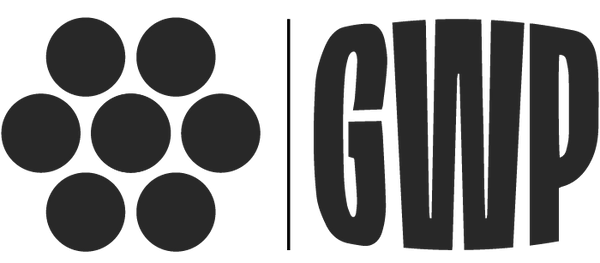
Written by Jamie Bolling
We’ve all heard some variation of “big back, big (insert compound here),” but how do we build a big back? Why is having a big back so essential?
Having a “big back” simply means that you have well-developed musculature in your back. Musculature that lends itself to sound structural support throughout your head, neck, shoulders, arms, torso, and legs (read: everything). You see, your back muscles are a key group of muscles for just about all of your daily functions, both in and out of the gym. Thus, there are a multitude of benefits to building a “big back”.
Now, your back muscles can be broken into 3 groups:
Superficial muscles, meaning that they are closest to the exterior surface of the body (your skin), and they include muscles like the latissimus dorsi (lats), levator scapulae, rhomboids (major and minor), and your trapezius (traps). These tend to be the most well-known back muscles, and that’s likely because they’re some of the most heavily trained muscles. They’re also key players in movements like the squat, bench, and deadlift, so most of us are well acquainted with this group.
Intermediate muscles, lie between the superficial muscles and the intrinsic muscles, and include the serratus posterior superior, and the serratus posterior inferior. These two muscles tend to be lesser known, though that doesn’t mean their function is any less vital – especially in powerlifting. In fact, they function by assisting the rib cage in elevating and depressing, two movements that come in handy when you’re trying to brace for a heavy lift.
Intrinsic muscles, also known as deep muscles. This group is centered around your spinal column, and consists of a lot of muscles, so many in fact they’re further broken down into sub-groups: superficial, intermediate, and deep (super creative, right?). Overall, these muscles function to allow spinal flexion, spinal extension, head rotation, stabilize the spinal column and even provides some proprioceptive function (positional awareness).
Collectively, you can see why these muscles are imperative to a healthy body, especially one trying to pick up and move heavy weights. So, how do we make them bigger?
Well, try out these 5 exercises:
Pull-Ups: You know the saying “if it ain’t broke don’t fix it,” well pull-ups are a timeless classic for that reason.
Muscles: Lats, rhomboids, plus shoulders, arms, and chest
Variability: High
Alternatives: Assisted pull-ups, chin-ups, wide-grip, narrow-grip, single handed, typewriter, commando, muscle ups
Tips: We all start somewhere, these are hard for a lot of people to master so take your time, don’t be afraid to start assisted and progress from there.
Lat Pulldowns: The pull-up’s (not so) long-lost cousin?
Muscles: Lats, traps, and rhomboids, plus your biceps and rear delts
Variability: High
Alternatives: Wide-grip pulldowns, narrow-grip pulldowns, neutral grip pulldowns, reverse grip pulldowns, single arm pulldowns, straight arm pulldowns, V-bar grip, and there’s plenty more out there to explore.
Tips: Not every grip or bar is going to feel good to you, and that’s okay. The point of this exercise is to maximize contraction and really focus on engaging throughout the entire range of motion. If one grip isn’t working for you, try another!
Rows: The ultimate back exercise, well, besides maybe deadlifts.
Muscles: Lats, traps, and rhomboids (yup, you guessed it) plus a few other muscles depending on your variation
Variability: High
Alternatives: Bent-over rows, pendlays, inverted rows, rack rows, T-bar rows, cable rows, dumbbell rows, seal rows, it truly goes on and on here…
Tips: Be creative with this one, not matter what gym you’re in you can pretty much always MacGyver a way to do rows.
Bonus Tip: Utilize the dumbbells for unilateral work! This allows you to address potential imbalances while focusing on range of motion and full contraction at the top before controlling it down. You can hit moderate weight for some hypertrophy, or go heavy to focus on strength…though I don’t suggest doing so before deadlift day.
Planks: The microwave minute’s worst nightmare next to the treadmill minute.
Muscles: spinal erectors (and your abs)
Variability: Moderate
Alternatives: Weighted planks, side planks, feet-elevated planks, hands-elevated planks, plank jacks, and side-to-side planks
Tips: You’re going to start shaking at some point, and don’t worry, that’s normal. Just focus on your breathing and maintaining the tight position. I promise your timer did not actually slow down.
Front Squat Holds: Yes, they’re a thing.
Muscles: Lats, traps, rhomboids, spinal erectors and a lot of other things, like your quads, hamstrings, glutes, abdominals and shoulders
Variability: Low
Alternatives: None (technically).
Tips: Don’t know it ‘til you try it. These are surprisingly hard on all accounts, so start with a light to moderate weight and aim for 20-30 seconds. You really want to focus on having a solid brace, and maintaining that pressure throughout the time.
Bonus Tip: Don’t have the mobility? Use some straps to wrap around the bar, then grab the excess strap and hold at a comfortable angle.
While this most definitely is not an exhaustive list of back exercises for strength or hypertrophy, it’s a good start. One that can hopefully provide ideas to spice up your back work, or even get you started in developing one of those “big backs” everyone is ranting about.
The biggest thing to be mindful of is how these exercises will play into your program as they can induce fatigue and soreness, so talk to your coach before you just start sprinkling these into your accessories. Otherwise, good luck on building those big backs. Oh, and you may need to buy some bigger shirts sooner or later.


Great Article, Had no idea there was so much to our backs. Thank-You !!
Nice article!